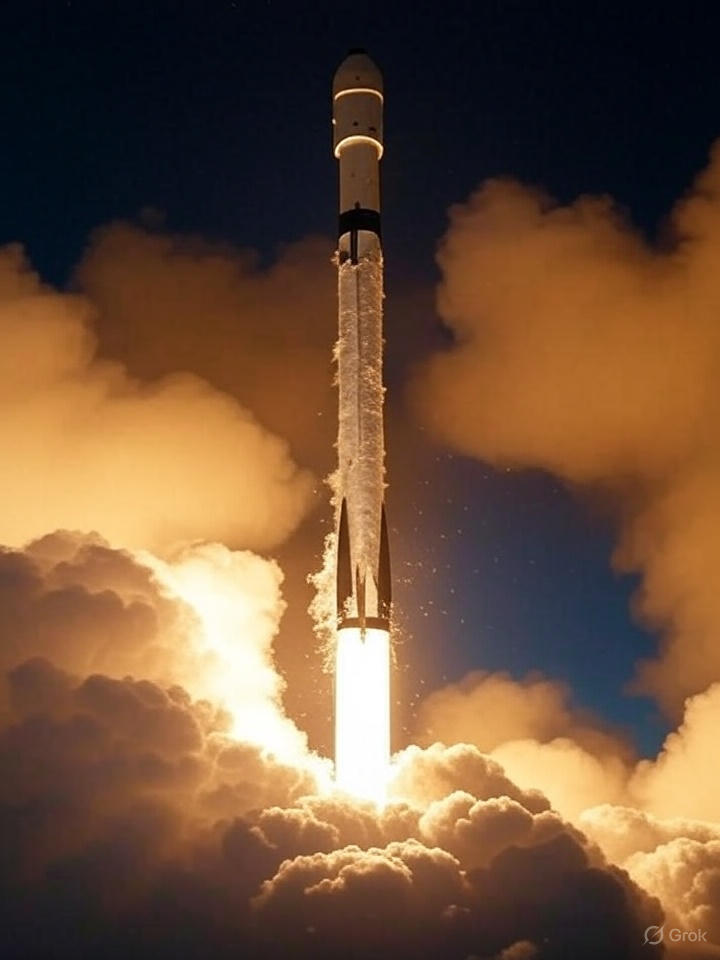Latest Deployment: 28 Starlink Satellites Launched
On July 19, 2025, SpaceX successfully launched 28 Starlink V2 Mini satellites aboard a Falcon 9 rocket from Cape Canaveral. The mission designated Starlink 10‑26 marked another successful addition to the constellation, contributing to a total of over 8,000 Starlink satellites in orbit(Globedge). The Falcon 9 reusable first stage booster B1078, on its 22nd mission, returned safely to the droneship A Shortfall of Gravitas, marking its 119th landing (Spaceflight Now).
Earlier that month, on July 9, another batch of 28 satellites was sent into low Earth orbit a deployment widely broadcast by media outlets to underscore SpaceX’s consistent network growth (Space). In June, SpaceX also launched 27 Starlink satellites, continuing its rapid rollout for global coverage (Space).
Why It Matters: Enhanced Global Broadband
These most recent launches push Starlink’s total in orbit satellite count to approximately 8,015, of which nearly 6,938 are operational (Wikipedia). The expansion directly aligns with Starlink’s goal to provide high speed, low latency internet service globally particularly targeting rural or underserved regions where traditional infrastructure remains limited. Starlink already serves over 140 countries, with subscriber bases exceeding six million users (Reuters).
The V2 Mini satellites represent an upgrade in performance and efficiency: they use argon Hall thrusters, advanced phased array antennas, and support E band backhaul, significantly boosting data throughput and reliability (Space).
Reusability & Launch Cadence: Driving Down Costs
SpaceX’s routine reuse of Falcon 9 boosters enhances the cost effectiveness and cadence of Starlink deployments. The July 19 mission booster, B1078, exemplifies operational maturity its successful landing contributes to SpaceX’s evolving vision of sustainable launch systems (Spaceflight Now). That same week also saw successful deployment of 24 more satellites from Vandenberg Space Force Base, indicating high-frequency launch operations (Spaceflight Now).
Reliability Challenges: Recent Network Outage
Despite expansion milestones, Starlink’s network experienced a notable disruption on July 24, 2025, when more than 61,000 users reported a global outage reported via Downdetector (Reuters). Rapid recovery began around 5:28 p.m. ET, and SpaceX confirmed the outage stemmed from internal software failures. The company committed to identifying root causes to prevent recurrence (Reuters). Despite the incident, Starlink maintains a reported network reliability of over 99% uptime (SpaceX).

Strategic Impacts & Broader Context
The accelerated constellation growth bolsters Starlink’s role in connecting remote communities, supporting services from aviation and maritime sectors, and enabling critical infrastructure in regions prone to digital exclusion (SpaceX). Performance metrics such as latency around 30 ms and download speeds nearing 200 Mbps have surpassed legacy geostationary systems like Australia’s Sky Muster network, demonstrating Starlink’s competitive strength (The Australian).
The expansion also positions Starlink as foundational to SpaceX’s broader business model substantial revenue is expected from consumer subscriptions, direct to cell services, and government contracts (SatNews).
What’s Next: Scaling & Challenges Ahead
- Scaling Up: SpaceX aims to eventually operate up to 12,000 satellites, with potential expansion beyond if regulatory approval is granted (Wikipedia). Continued launches throughout 2025 suggest a growing pace toward that goal.
- Service Expansion: Starlink is expanding into new markets like Bangladesh, India, and Morocco, while showcasing direct to cell connectivity in partnership with T Mobile in the U.S .
- Reliability & Policy Risks: Software outages and geopolitical implications linked to founder Elon Musk’s political visibility pose ongoing threats to trust and contracts in some markets (Reuters, Financial Times).
Summary
In summary, SpaceX’s launch of 40 more satellites including two recent missions deploying 28 satellites each reflects a sustained push to bolster Starlink’s global broadband footprint. Each mission reinforces SpaceX’s reusability gains and lowers deployment costs while scaling connectivity worldwide. Despite a rare global outage, Starlink continues to claim over 99% uptime and offers fast, reliable internet across remote and developing regions. As the constellation nears 8,000 active satellites, the next phase will focus on service expansion, direct to cell integration, and maintaining operational resilience amidst rising geopolitical and technical challenges.

